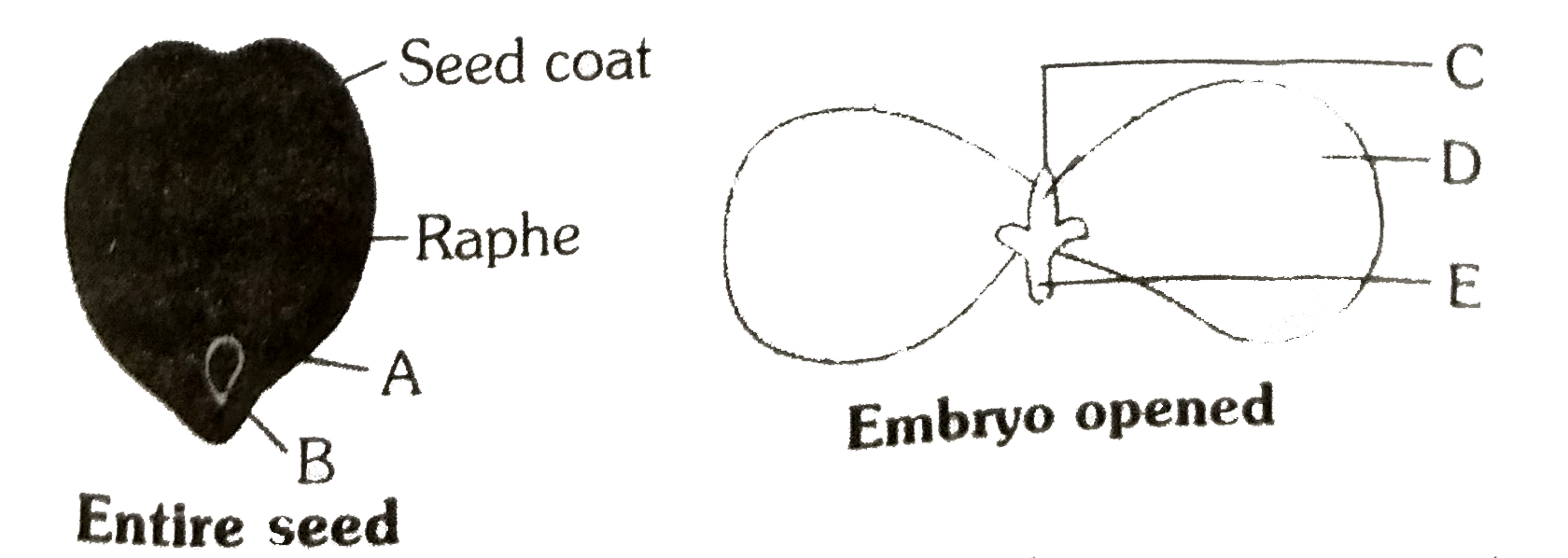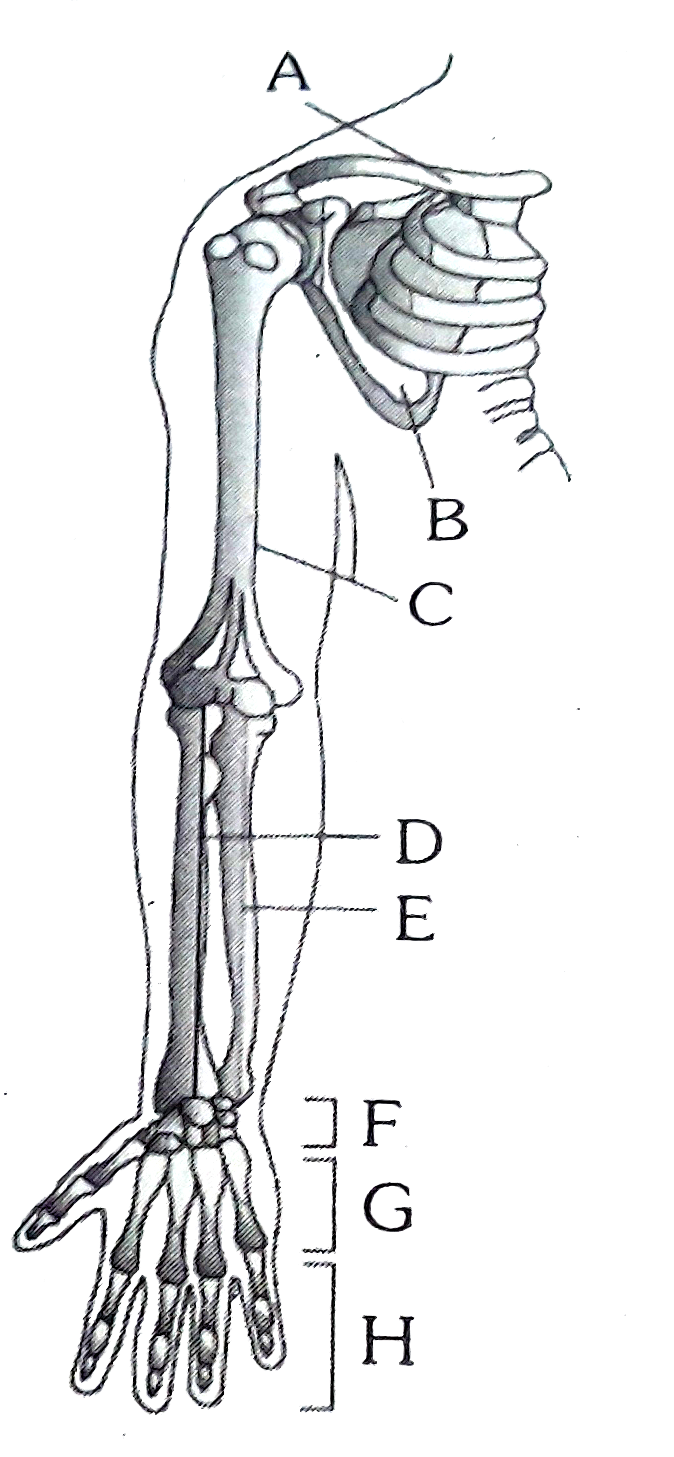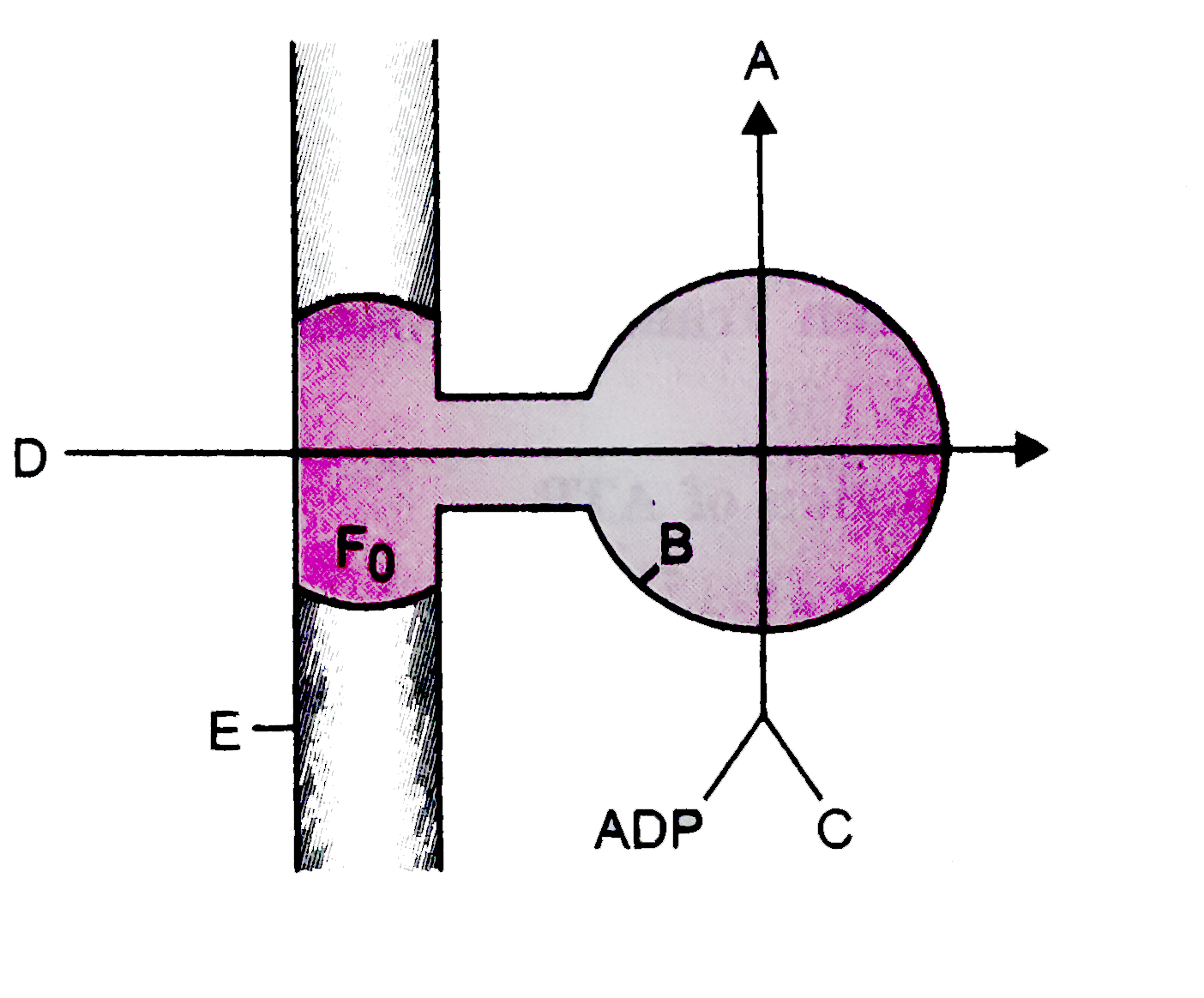Given below is a diagram showing ATP synthesis during aerobic respiration, replace the symbols A, B,C, D and E by appropriate terms as given below.
F1 particle, formationof π,2H+, inner mitochondrial membrane , ATP, Fo particle, ADP .

Video Solution
Text Solution
Symbol A,B,C,D and E in the diagram represents
A-ATP B−F1 particle C−Π
D−2H+ E-inner mitochondria membrane.
|
Updated on:21/07/2023
Topper's Solved these Questions
- BOOK - NCERT EXEMPLARCHAPTER - RESPIRATION IN PLANTS EXERCISE - SHORT ANSWER TYPE QUESTIONS23videos
RESPIRATION IN PLANTS
- BOOK - NCERT EXEMPLARCHAPTER - PLANT KINGDOMEXERCISE - LONG ANSWER TYPE QUSTIONS5videos
PLANT KINGDOM
- BOOK - NCERT EXEMPLARCHAPTER - STRUCTURAL ORGANISATION IN ANIMALSEXERCISE - long answer type questions5videos
STRUCTURAL ORGANISATION IN ANIMALS
Similar Questions
Knowledge Check
- Question 1 - Select One
The following diagram is the typical structure of dicotyledonous seeds. In which one of the option all the five parts A to E are correctly identified.
 AA - Hilum, B - Micropyle, C-Radicle, D - Cotyledon, E - PlumuleBA-Hilum, B - Micropyle, C-Plumule, D-Cotyledon, E-RadicleCA-Micropyle, B- Hilum, C-Plumule, D-Cotyledon, E-RadicleDA-Hilum, B - Micropyle, C-Plumule, D - Radicle, E-Cotyledon
AA - Hilum, B - Micropyle, C-Radicle, D - Cotyledon, E - PlumuleBA-Hilum, B - Micropyle, C-Plumule, D-Cotyledon, E-RadicleCA-Micropyle, B- Hilum, C-Plumule, D-Cotyledon, E-RadicleDA-Hilum, B - Micropyle, C-Plumule, D - Radicle, E-Cotyledon - Question 2 - Select One
Study the diagram given below,

Parts labelled as A,B,C,D and E respectively representAParietal bone, Frontal bone, Temporal bone, Occipital condyle and Hyoid bone.BFrontal bone, Parietal bone, Temporal bone, Hyoid bone and Occipital condyleCFrontal bone, temporal bone, Parietal bone, Occipital condyle and Hyoid boneDFrontal bone, Parietal bone, Temporal bone, Occiptial condyle and Hyoid bone
Identify a, b, c, d, e and f in the table given below :
 View Solution
View SolutionGiven below is the flow chart showing the process of somatic hybridisation. Identify A,B,C,D and E.
 View Solution
View SolutionIdentify a, b, c, d, e and f in the table given below :
 View Solution
View SolutionIdentify a, b, c, d, e and f in the table given below :
 View Solution
View SolutionLabel A,B,C,D,E,F,G and H in the given diagram of forelimb
 View Solution
View SolutionThe number of different triangles formed by joining the points A,B,C,D,E,FandG as shown in the figure given below is
View Solution



